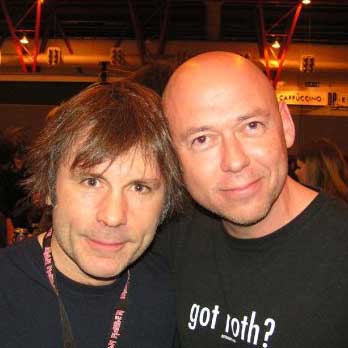"I wanted to make the greatest rock record that I'd ever heard. I wanted it to sound enormous, to grab you by your throat": How Bruce Springsteen saved his career with Born To Run
The Boss spent six months working on the album's title track

On 25 August 1975, Bruce Springsteen’s third studio album was released. Born To Run turned out to be one of the all-time great rock albums. And most important of all, it saved Springsteen’s career at a time when his record company was threatening to drop him.
In a 2020 interview with Rolling Stone, Springsteen recalled how he reached for the stars with Born To Run.
“I had these enormous ambitions,” he said. “I wanted to make the greatest rock record that I'd ever heard. I wanted it to sound enormous, to grab you by your throat and insist that you take that ride, insist that you pay attention – not just to the music, but to life, to being alive.”
But as he strived to create this magnum opus, Springsteen was under serious pressure from senior figures at Columbia Records.
His first two albums – Greetings from Asbury Park, N.J. and The Wild, The Innocent & The E Street Shuffle, both released in 1973 – had not performed well sales-wise.
The former had peaked at No.60 on the Billboard 200. The latter had gone just one better at No.59.
The belief at Columbia was that another of the label’s young artists, Billy Joel, was more likely than Springsteen to make to big.
Want all the hottest music and gear news, reviews, deals, features and more, direct to your inbox? Sign up here.
In the end, of course, both Joel and Springsteen went on to have highly successful careers.
And for Springsteen, Born To Run was the turning point.
The recording sessions for the album were astonishingly long – especially so for an era when major rock artists were expected to deliver an album per year as standard.
The sessions began in January 1974 and only ended in July 1975.
It was Springsteen’s aim to recreate legendary producer Phil Spector’s Wall of Sound, as heard on pop classics such as the Ronettes’ Be My Baby and Ike & Tina Turner’s River Deep, Mountain High.
On the Born To Run album Springsteen was co-producer alongside his manager Mike Appel and the man who would eventually replace Appel, Jon Landau.
Although the album was credited to Springsteen alone, he was backed by his seven-piece ensemble The E Street Band, which included the charismatic saxophone player who featured alongside Springsteen on the album cover, Clarence Clemons.
In addition, a further nine musicians contributed to the album, most notably the guitar player who would feature prominently in Springsteen’s future career, Steven Van Zandt.
In the pursuit of perfection, Springsteen tinkered endlessly with the title song Born To Run. Work on this one song extended to a period of six months. Springsteen later revealed that the final version had 72 different tracks squeezed onto the 16 tracks of the mixing console.
Among the tracks left over from these sessions was Lonely Night In The Park, which was released recently in anticipation of the album’s 50th anniversary.
Springsteen would admit that the recording of this album “turned into something that was wrecking me, just pounding me into the ground”. But the ends justified the means. Born To Run is a genuine masterpiece.
The title track is Springsteen’s signature song. There is arguably no more euphoric moment in the entire history of rock music than when he sings: “Highways jammed with broken heroes on a last chance power drive.”
Elsewhere on the album are other classic songs including the Roy Orbison-referencing Thunder Road, the funky Tenth Avenue Freeze-Out and the two great epic tracks, Backstreets and Jungleland.
Born To Run reached No.3 on the US chart and ensured that nobody at Columbia Records ever doubted Bruce Springsteen again.
The album has since sold in excess of seven million copies in the US alone.
And its importance was summed up in a retrospective review by The Guardian’s Michael Hann, who described Born To Run as “the album where Springsteen starts to make the transition from a musician to an idea, a representation of a set of personal and musical values”.

Paul Elliott has worked for leading music titles since 1985, including Sounds, Kerrang!, MOJO and Q. He is the author of several books including the first biography of Guns N’ Roses and the autobiography of bodyguard-to-the-stars Danny Francis. He has written liner notes for classic album reissues by artists such as Def Leppard, Thin Lizzy and Kiss. He lives in Bath - of which David Coverdale recently said: “How very Roman of you!”
You must confirm your public display name before commenting
Please logout and then login again, you will then be prompted to enter your display name.


